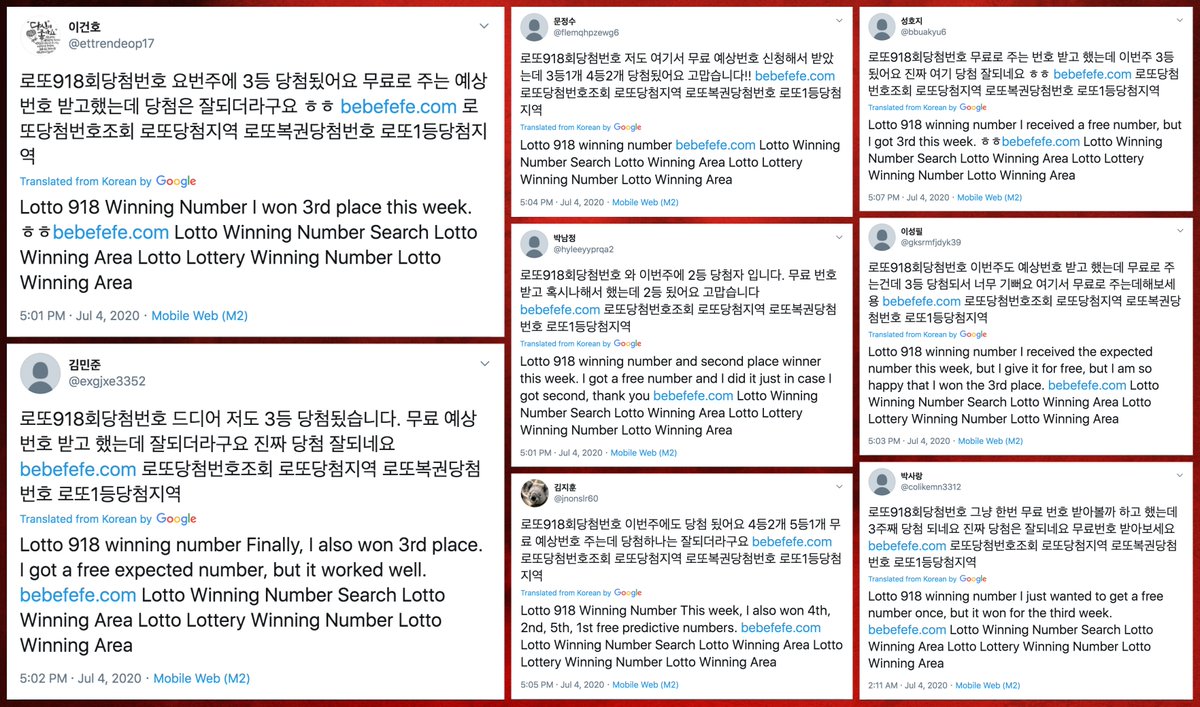We don't know Korean (and don't fully trust Google Translate) but it sure looks like this botnet is claiming to have a knack for picking winning lottery numbers. #SaturdaySpam
cc: @ZellaQuixote
cc: @ZellaQuixote

This botnet consists of eight accounts, all created on May 9th 2015. At first glance, they look extremely low volume, with the most active account having tweeted only 135 times in 5 years. 

In reality, these bots are much spammier, tweeting every 10-12 minutes, or 120-144 times per day (varies from bot to bot). They keep up the appearance of low volume by deleting the most recent tweet every time they post a new one (with occasional failures). #Lobsterfest
The actual mission of this botnet appears to be to link bebefefe(dot)com, which in turn redirects to lottotong(dot)com. Based on the tweet content and the lottery balls on the site we're going to take a guess that the site has something to do with picking lottery numbers. 



• • •
Missing some Tweet in this thread? You can try to
force a refresh





























